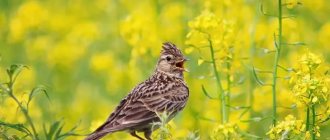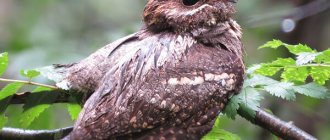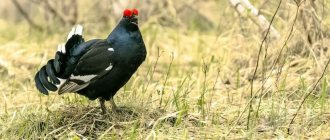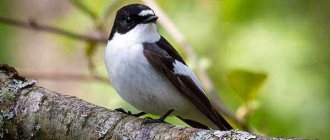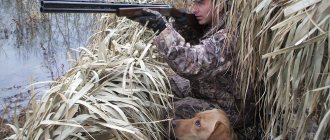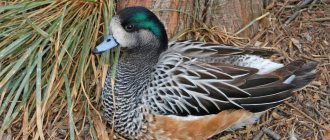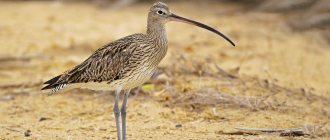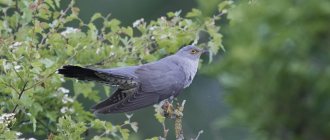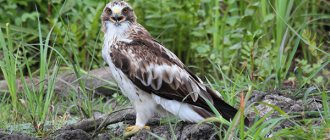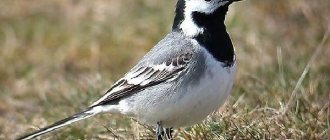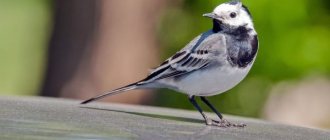The lark is a small motley bird of the order Passeriformes of the Lark family. It looks like a sparrow, but its head is decorated with an elegant crest. The lark has strong wings to fly to great heights. And a ringing voice to sing a spring song to the whole area. However, the lark spends most of its time on the ground, settles in open spaces, and makes its nest in fields, steppes and meadows. It also feeds on the ground, running through the fields in search of seeds and sprouts on its short legs, suitable for moving on the ground.
The lark lives and feeds on the ground, its legs are adapted for walking
Description of species
The extensive family of larks includes 98 species. Larks are true masters of flight. In this they are helped by strong wings and a special structure of the tail feathers, which is adapted to perform aerobatics maneuvers in the sky. The color of the birds is generally inconspicuous, gray-brown, the color of the earth and dry grass, this helps them remain invisible. Fields sown with cereals, meadows with wild grasses, steppe expanses - this is the lark’s usual habitat. There are 14 species widely distributed on the territory of Eurasia, of which we will pay attention to the most numerous.
skylark
Representatives of this species are not easy to see in the grass due to their camouflage variegated brown coloration with white or yellow spots. The species is distinguished by the presence of white color: eyebrows above the eyes, feathers in the tail and chest. The chest is wide, not at all for a small bird, but rather for an opera singer, so the skylark's voice is very sonorous. The species is widely represented in Eurasia, inhabiting the northern part of Africa, as well as some territories in Australia and North America.
Skylark is an excellent singer with a ringing voice
Steppe lark
Large in size (up to 20 cm), but modest-looking bird with a brown back and white belly. Decorations include two black markings on the chest. Only the expanse of the steppe is suitable for him to live, where he makes a nest among the grass. He sings very loudly, even louder than the field one. Resident of Central Asia, Eastern and Southern Europe, North Africa.
THIS IS INTERESTING . An adult lark sings for about eight hours a day. But with breaks. One lark song can last up to 10 minutes. He also uses singing to mark his territory.
The steppe lark sings louder than the field lark, and its neck is decorated with a black “butterfly”
White-winged lark
The color of the plumage of birds of this species is dominated by brown and red colors. They are given individuality by wide white stripes on the wings and on the sides of the tail. Gray-brown back with dark spots and red head. The abdomen and chest are painted white. Lives in a strip of semi-deserts from Kalmykia to the Altai Mountains and in the west of Altai. Winters in southern Russia, Ukraine and the Caucasus.
The abdomen and chest of the white-winged lark are painted white
Salt lark
One of the smallest larks, its body length is 14 cm. It is colored gray, which is diluted by small brown spots on the head and larger ones on the back. Grayish-white neck and chest with longitudinal brown streaks. Generally similar to the gray lark, but differs in its distinctive round wing shape. It begins to sing early in the spring. It begins to voice its voice already from the end of March, sitting on the ground, and from the beginning of April it sings high in the sky. Inhabits the steppe shores of reservoirs in the Altai Territory, Transbaikalia, Mongolia and China. It makes nests in low-growing bushes of salt marshes, in thickets of wormwood and tamarisk.
The salt lark is gray with brown spots on the head and back
Common Crested Lark
The Crested Lark is invisible against the background of the ground due to its gray-striped color and medium size, up to 18 cm. This species is distinguished by a bent beak, rather wide wings and a pronounced crest on the head. Most often, the song of this representative of the lark family is heard not from the sky, but from some pebble on the ground. The crested lark lives from western Europe to the Yellow Sea and is mainly sedentary, that is, in winter it does not leave the territory where it nests in summer.
The Crested Lark has a high crest on its head
Black lark
This lark, when it sings in the spring sky, draws uniform circles. Quite a large bird, body size up to 21 cm, back covered with black feathers. This lark species also has a powerful yellow beak. Females differ from males in weight and color: they are lighter, with a pale gray belly and a whitish crop. It nests on the grassy banks of reservoirs from the Lower Volga to Central Asia. Adult males remain for the winter, while young animals and females prefer to migrate to places with a warmer climate.
The black lark is a fairly large bird with a powerful beak.
Japanese lark
Similar to the skylark, only longer-legged and long-billed, and the tail and wings are short. Body length 16-18 cm. The back is covered with ocher and brown feathers with a white border. The abdomen is light, but also with an ocher coating. The outermost pair of tail feathers is white. Indigenous to the Japanese Islands and the south of Sakhalin Island. To wait out the cold, it moves to the south of Japan and Korea.
The Japanese lark is an indigenous inhabitant of the Japanese Islands and the south of Sakhalin Island
Gray Lesser Lark
A heat-loving species, it prefers to live in dry areas and even deserts. Occupies the southern part of the lark's range. It considers Spain and North Africa its home, from where it does not fly away for the winter. It also nests in Mongolia and China, migrating to the warmer south of these countries in the cold season.
The gray little lark lives in warm regions and does not fly away from there to spend the winter.
Wood lark spinning top
The spinning lark is a small motley gray-brown bird that lives in the forest and loves to sit on a tree, which is a rare exception for the whole family. But the nest is made only on the ground. Distributed in North Africa and Western Eurasia. In Russia, he lives in the middle zone and on the banks of the Volga, in the Saratov region. It is found on the western shores of the Caspian Sea and in the Caucasus. Yula sings on clear summer nights.
THIS IS INTERESTING. In the trill of the wood lark, the syllables “yul-yul-yul” are heard, which is where its name in Russian comes from. The French call the bird "lulu". The song of the spinning top rings on a quiet summer night, when all other birds are silent. It pours from the sky magically and mysteriously.
The wood lark Yula lives on the edges of rare pine forests
Appearance and features
Photo: Bird lark
There are many varieties of larks, but their appearance is often not much different. All representatives of this family have small or medium dimensions. The length of adult individuals is usually about fourteen centimeters, but larger specimens are also found in nature - from twenty to twenty-five centimeters. Body weight is also not large: it ranges from fifteen to eighty grams. Despite its modest dimensions, the physique itself is very strong and well-built.
Larks have short necks but large heads. The shape of the beak is different for different species. The wings of birds are long and pointed at the end. The tail contains twelve tail feathers. Birds have strong but short legs with medium-length toes. Such legs are perfectly adapted for active movement on the ground and other flat surfaces. It is not often possible to see larks on bushes or trees. This is also due to anatomical features. These birds have long claws on their toes that resemble spurs. They are the ones who prevent animals from sitting on small, fragile branches for a long time.
Interesting fact: Larks are not only excellent singers, but also excellent flyers. Nature itself gave this property to birds of this family. With a relatively small body, the animals have huge wings and a short tail. All this helps larks to carry out fast and maneuverable flight.
The colors of the feathers of larks are quite modest and inconspicuous. However, this is not a bad thing, because this way the animals are less noticeable to predators. The color of birds usually matches the color of the soil in the area where they live. There are no differences in the colors of females and males. Only young animals can be recognized by the color of their feathers. Theirs is more colorful. The differences in color between different species are minor, but still present.
Range and habitat
The Larks confidently took over the entire planet. Where they are not found is only in Antarctica. For example, in the rare bushes of Africa lives the Sunny Crested Lark, which can imitate the singing of other birds. And in the parks and squares of Australia there lives a small Javan lark that sings on clear, quiet nights.
The habitat covers fields, gardens and parks with low bushes, meadows, steppe spaces of Europe and Asia. There is a tendency for the range to move northward following deforestation, but it still cannot be considered stable. For a lark, the natural landscape is an open, dry and even hot space. The desert is home to dry-steppe and desert species of larks. In mountainous regions, larks live at altitudes of up to 5000 meters. Only the tree lark, the spinning lark, is the only one among the larks that can live on the edges of sparse pine forests.
The spinning lark lives in the forest, but builds its nest on the ground
THIS IS INTERESTING . The structure of the legs does not allow larks to sit on a branch. On the back finger they have a straight and long claw. This paw structure is designed to walk on a surface.
How the lark sings
Larks begin to sing while still in foreign lands, in winter quarters. They return home singing, carrying spring on their wings. In their native lands, the song of the lark can be heard from the first days of April, and in the southern regions - from mid-March. Returning from wintering, larks sing a special song of passage. It is short, not rich in tints and resembles a simple chirp.
The main song of the lark, flowing from the heights of the clear sky from spring to mid-June, is the mating song of the male attracting the female. The lark can fly very high. It hovers in the air and makes long ringing trills. Listen to the spring song of the lark, rich in melodic turns:
The lark sings above its nest, the area around which it considers its territory and does not allow other males there. On the ground, the lark practically does not sing, only some species, for example, the common crested lark. Larks sing until mid-summer. The lark can not only sing, but also scream. His quiet chirping is similar to that of a sparrow and is heard on any other occasion.
What does a lark eat?
Species living in fields feed right there: they peck at the grain of ripened oats and wheat. They are very fond of wild millet and seeds of meadow wild plants. Larks and small insects eat; growing young individuals especially need animal food. It is important to note that the lark does not chase them in flight. Larks find all their food on the ground. These are small bugs, flies, spiders. A Crested Lark may swallow a worm or a small butterfly. The black lark, on the other hand, eats insects all summer and switches to seeds in winter. To quickly digest hard cereal grains, birds peck small pebbles along with them. In early spring, all larks raid the green, vitamin-rich seedlings of cereals. Larks drink morning dew from blades of grass.
Dietary supplements
When insects appear, larks begin to hunt them. They hunt only on the ground and do not catch insects flying or crawling through tall grass. They hunt mainly:
- Small beetles;
- Small spiders living on the surface of the ground or in short grass;
- Larvae of various insects;
- Butterfly pupae and caterpillars;
Larks quench their thirst with dew settling on plants.
At the end of summer and early autumn, when the harvest begins, fallen seeds become the main food of birds. You can often see numerous flocks flying from field to field and not at all afraid of cars.
You can often see these small birds bathing in puddles of dust on the roadsides - this is how they clean their feathers.
How do larks breed?
Larks are monogamous birds. The male is the first to choose the territory and charms the female with singing. After which the female builds the nest herself, and the male continues to sing in the sky, or sitting nearby as a guard. By the way, they are no different in appearance except for size. The male is usually more stocky. And, of course, only the male sings.
Larks do not like dampness, so the nest is built in a dry, open place. In early May, the female selects a hole for the nest and lines it with collected bird down. She builds the walls of the nest 5 cm high from dry blades of grass and roots. The lark's nest, like the eggs, is impossible to find on the ground, they blend so much in color with the environment.
The lark's nest is securely camouflaged
On average, larks have 5–7 yellow or pale green speckled eggs. In skylarks and black larks, only the female incubates the eggs. The female and male salt lark sit on them in turns.
The chicks hatch, depending on the species, after 9–15 days; they are still blind and cannot fly, but on average after 10 days they are already out of the nest. They run among the grass until they learn to fly; their young plumage makes them invisible against the background of the ground among the grass stems.
The parents feed the brood for another ten days with animal food: bugs and spiders. After which the female goes to build a new nest, and the male does not leave the chicks for another 5 days. Most species manage to breed twice during the summer.
Lark chicks will live next to their parents until they fly
general characteristics
The dimensions of larks usually do not exceed body length within 25 cm, and their weight is no more than 70 g. When comparing the size of the body and shoulder blades, one gets the feeling that the shoulder blades are disproportionate and thin, but at the same time they have great strength. The birds' body itself is strong and well-knit. The head of larks is relatively large, as is the beak, in which a bend can be seen. The neck is quite short. Birds' wings are long and pointed at the ends.
The unique body structure allows larks to move quickly through the air. Their speed is due to their wide wings and short tail, which help them skillfully control their small body in flight.
Great singing talent compensates for the unprepossessing appearance of larks, which look like absolutely unremarkable birds. This is due to the fact that larks live in open areas, close to the ground. After choosing such a habitat, evolution took care of creating a suitable color, reminiscent of the color of the soil. Sexual dimorphism in females and males is not pronounced, so it will be quite difficult for an ordinary person to distinguish them. Young larks have a brighter color, which allows them to be distinguished from adults.
Despite the fact that ornithologists have an extensive classification of varieties of larks, these birds differ little in appearance even when living in different habitats. The color of all larks is quite inconspicuous, since its main task is to replicate the appearance of the territory on which they live.
Most varieties of larks have strong but short legs, which help them move skillfully along the ground and other surfaces. This distinguishes them from other birds, most of which usually have poorly developed limbs due to the fact that they rarely descend to the ground.
Flight and wintering
For the most part, larks are migratory birds, except for species living in countries with a mild, warm climate. Starting in September, young and adult individuals fly away to winter in warmer places. As a rule, birds nesting in the central zone of the European part of Russia move to the south of Europe and North Africa. By the beginning of their migration, larks molt: the old plumage is replaced by new ones.
The reason for the flight is the lack of food: snow covers the fields, it is impossible to get seeds, there are no insects, they plunge into suspended animation.
To migrate, birds gather in small flocks. Return on average by early March. Since ancient times, the arrival of larks meant the beginning of spring, and peasants were preparing for field work.
THIS IS INTERESTING. If the larks fly to their native land ahead of schedule, they will die. Only those that arrive on time survive: by the spring equinox (March 22).
Larks arrive in early spring, when the snow has not yet melted from the fields
Natural enemies in the wild
Little steppe singers have quite a lot of enemies. While the lark is carried away by the song, it is vulnerable and becomes easy prey for birds of prey. In the sky he is threatened by a hobby falcon, and less often by a hawk. The lark's salvation is to fall down like a stone and hide in the grass.
For chicks that have just fledged, the silent harriers guarding their prey above the ground are dangerous. They scare the young bird and force it to fly higher, blocking the way to the ground.
There is no less anxiety on earth. In the fields and on the edges of the forest these are weasels. Also in the fields are snakes, voles and even hedgehogs. In the steppes there are ferrets, gophers and rats. A fox may attack a lark. Large birds offend larks: rooks and magpies, which can drag away an egg and even a chick.
The lark's plumage camouflages it against the background of earth and dry grass.
Habitats
They live year-round in a wide variety of open areas with low-lying vegetation. Suitable habitats include:
- heathland;
- heather meadows;
- fields;
- swamps;
- peat bogs;
- sand dunes;
- agricultural grounds.
Agricultural lands are traditional habitats for skylarks, and the birds are seen in arable fields throughout the year. Larks are one of the few bird species that nest and feed exclusively in open fields, quite far from trees, hedges and other tall plants.
Large open agricultural fields provide suitable nesting and feeding sites. The skylark's dull plumage provides excellent camouflage in the undergrowth and makes it difficult for birds to spot on the ground.
Keeping at home
The lark is a free-spirited and timid bird, but it can be tamed. For a lark, you need a special “lark” cage: medium in size, low with high sides. The top inside the cage should be made soft so that the bird, being frightened and flying up, does not break. The rods should also be made of soft material: wood or plastic. The cage needs to be hung right up to the ceiling, because larks are shy.
Pour fine river sand into the bottom of the cage, as the bird loves to swim in it. For this reason, it is better to make the drinking bowl and feeder external so that sand does not get into them. There must be holes in the cage so that the bird can stick its head through and eat. You need to make perches if a spinning tree lark will live in the cage, and put a stone or piece of wood on the bottom for the skylark.
To be healthy in captivity and delight its owner with singing, the lark must receive all the necessary components from food, as in the wild.
- A mixture of millet, hemp, oats, flax and wild seeds.
- You can buy special canary seed or a mixture for larks at a pet store.
- Green food: cereal sprouts, cabbage or lettuce.
- Grated carrots and egg.
- Low-fat minced meat.
- Bloodworms or worms.
- Water.
In their natural environment, larks live on average two years. If you feed your lark correctly and care for its cage, then at home it can live twice as long as in the wild. A caged skylark can sing from early morning until late evening, tricked by electric light. If there are other poultry nearby, the lark will eventually learn to copy their voices.
It is worth saying that a lark in a cage sings completely differently than in the wild. This song does not contain that stormy joy of life that pours from the free expanses of heaven, when the snow is just melting from the fields and the air is filled with spring.
THIS IS INTERESTING . Each type of lark has its own unique voice and signature song. Larks are able to copy the voices of other songbirds.
The steppe lark sings up to 8 hours a day in the wild.
Coloring
The steppe lark has a basic color of a brownish-gray hue. The back of the neck, shoulders and front of the back have feathers with dark shafts and light ocher edges.
The dark stems in the uppertail are very weakly expressed. The coverts of the minor wings are grayish-brown in color, the large and medium ones are dark brown, with buffy or pale reddish edges in the young feathers. The ends of the primaries have light, almost white spots. The outer tail feathers are white with the inner bases of the webs brown; on the edge, the second pair has white wide edges, all the others have small white spots; all middle pairs are brown and single-colored.
The ventral side of the bird is white. The lateral parts of the head are grayish-brown; There is a light eyebrow above the eyes. Along a large black spot on the sides of the crop. The main part of the chest and crop are with dark brown and grayish streaks. The sides are gray, as are the underwings, only the latter have white edges. Light brown iris. The legs and beak are pale brown.
Conservation status of populations
In the international classification, most lark species have the status of “Least Concern”. This means that populations as a whole are thriving. However, there are species that are noted by the International Union for Conservation of Nature with the following statuses:
- two critically endangered species: the Razo Island lark and the Archer's lark (Somalia);
- two vulnerable species: the Red Lark in Namibia and the Rudy's Lark in South Africa;
- three endangered species: Finch Lark (South Africa), Ash's Lark and Red-crowned Lark (Somalia).
Ornithologists believe that the main reason for the decline in populations is the plowing of the steppes. The more natural steppes people plow for crops, the less environment suitable for larks to live in. Unreasonably large amounts of chemicals that are introduced into the soil, killing insects and harming the food supply of the lark, are reducing the ranges of skylarks and many other larks in Europe and Asia.
Legends and traditions
There is a beautiful legend about how God threw a piece of earth into the sky, and this loud, earth-colored bird appeared. For a long time, many European peoples associated the lark with spring and harvest. Killing a lark was considered a great sin.
In the ancient Slavic tradition there was a belief that the lark, with its song, connects heaven and earth with invisible strings and asks higher powers for rain. Many peoples believed that the lark in the sky sings hymns to God, offering him praise and prayers. The lark loves to bathe in the dust, clean its feathers, and people say: a lark in the dust means rain.
Traditionally, on the Day of the Forty Martyrs, larks are baked from dough.
The folk holiday of the spring equinox - “Magpies” (with the emphasis on the first syllable), which falls in the last week of March, just in time for the arrival of the larks, is associated with the magical abilities of larks to ask higher powers for rain, fertility and the future harvest. In houses they made larks from dough and held rituals to call for spring: they sang “chants”, left baked larks on the windows, planted them on branches, and treated neighbors. In the Orthodox tradition, larks are considered a symbol of the souls of Christians who suffered for their faith, and are baked for the commemoration of the Forty Martyrs on March 22.
